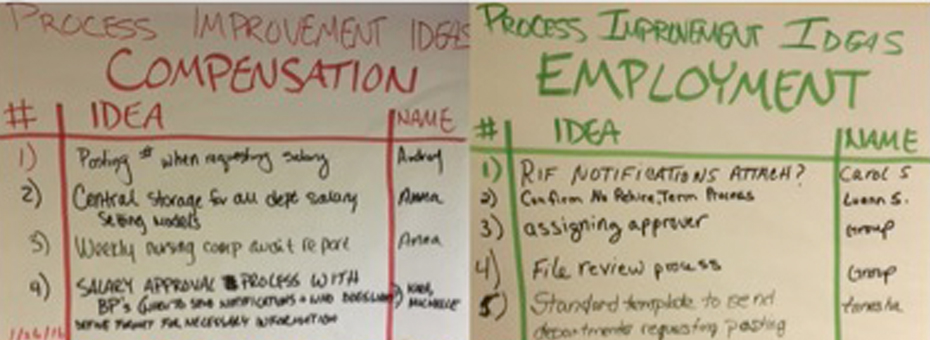In January 2016 the Human Resources department at the University of Michigan Health System (UMHS) was restructured into a High-Impact Model. This was part of a larger effort to standardize appropriate work across UMHS. The health system was extremely decentralized which led to significant waste in duplicated efforts and non-standardized work. The new High-Impact Model consists of: Networks of Expertise (NOE), HR Business Partners (BP), and the HR Solutions Center (HRSC).
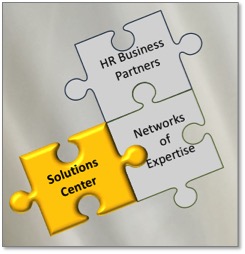
The NOE initiates philosophy, strategy, and compliance development. The BP works directly with departments to achieve operational excellence in strategy, workforce planning, and employee relations. The HRSC, the focus of this article, supports process transactions for its 27,000 customers. These transactions include Job Postings/Offers, Salary Determination, Family and Medical Leave of Absence (FMLA), and many general questions. Ultimately, the HRSC’s goal is to provide friendly, reliable, and timely services for our customers.
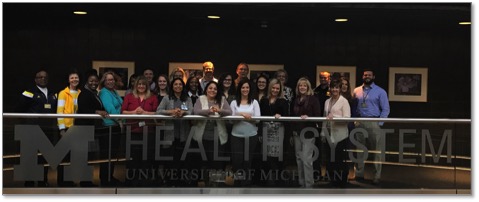
HR Solutions Center
Initially, the HRSC was decentralized. Individual members operated independently within each department. Similar work was processed differently depending on the department. This restructure moved the HRSC’s work into a centralized function that processed transactions from a single location. Because the previous work was not measured, there were many unknowns, such as the following questions that we couldn’t answer with certainty:
- How many transactions are processed each week?
- What is the breakdown of transaction types that are processed?
- What is the level of standardization of work across departments?
The HR Solutions Center opened with an all-hands-on-deck approach (every person supported every area). Not knowing what to expect, we attempted to mitigate identified risks. The goal was to simultaneously support customers and start tracking data to help answer the questions above. A personnel matrix was developed showing each person’s key areas of competence. Initial processes were also developed to prioritize work as it arrived.
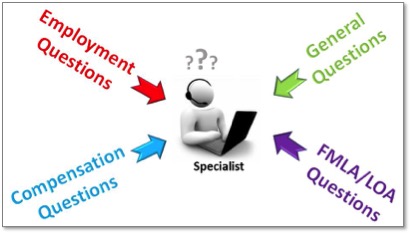
All-Hands-On-Deck Approach
In the mindset of PDCA, our motto became, “We will do things the best way we know how today, and if we find a better way tomorrow, we’ll adjust.”
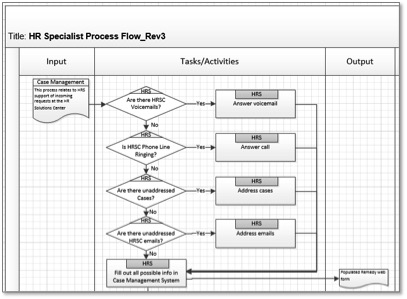
Process for Addressing Incoming Work
We immediately noticed extreme variation in processes and a lot of waste via multitasking. However, we gained knowledge through data collection. During the first three months we operated in ‘survival mode’, supporting customers while beginning to develop a lean mindset in our work. We instituted daily 15-minute huddles and began to publish basic metrics. Several process improvements were implemented, from creating instructions on how to scan documents to posting suggestions for improvement on the walls.
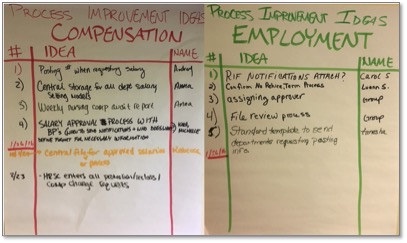
Initial Process Improvement Ideas
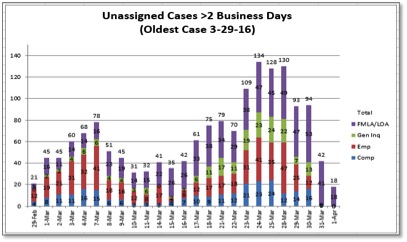
Initial Case Backlog (Unassigned Cases) Metric
After three months, we started to understand pain-points, areas requiring standardization, and incoming volume. At this point, the HRSC was restructured (Restructure #1) into four teams: Compensation, Employment, Family and Medical Leave of Absence (FMLA), and General Inquiries. Each team focused on developing standardized work and increasing depth-of-knowledge for their specific area, led by a Team Lead.
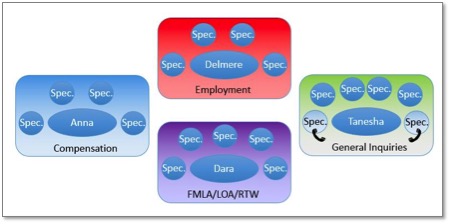
Restructure #1
We also instituted a two-tiered daily huddle system. Huddles with the entire team continued every Tuesday/Thursday, concentrating on items that affected the entire group. On Monday/Wednesday/Friday each team held a huddle, concentrating on topics specific to their area. Items from team huddles that would affect the entire group were reported-out on Tuesday/Thursday during the entire team huddle.
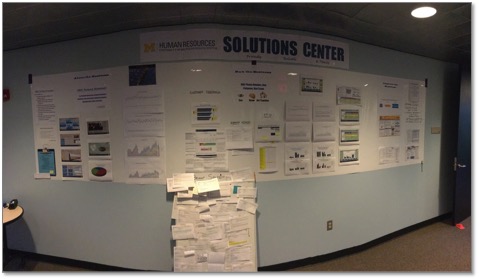
Main Huddle Board (Tues/Thurs)
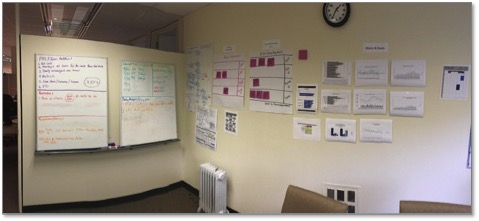
FMLA/LOA Team Huddle Board (Mon/Wed/Fri)
After six months we began to see major improvements in several areas. Processes in key focus areas were documented and shared, depth of knowledge increased in each area, and productivity was up about 50 percent! But we still weren’t satisfied. We needed to start building flexibility into the group.
At this point, the HRSC was restructured again (Restructure #2), focusing on cross-training and providing ‘new sets of eyes’ on processes. Several team members expressed interest in learning about other teams while others wanted to remain within their same team and increase their depth of knowledge in a particular area. This provided a conundrum. How could we simultaneously increase depth of knowledge and promote cross-training? We decided on a hybrid rotation concept. Those team members that were interested in learning about other teams were offered a chance to ‘rotate’ while those that wanted to increase depth of knowledge were offered the chance to stay in their groups.
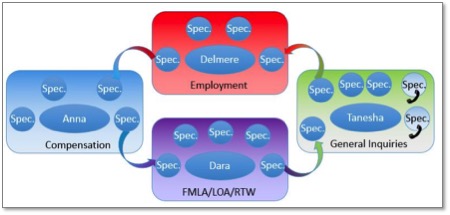
Restructure #2
Nine-months into our journey, Restructure #2 has served as a great pilot. Team members who rotated brought new life and ideas into each team. Team members who did not rotate focused on documenting standard work, streamlining processes, and providing onboarding training for those members who rotated into their team. Processes are more standardized within the HR Solutions Center, and many members have gone ‘on tour’ to provide education and promote partnering opportunities with our customers. We have also been fortunate to share our journey with over a dozen health system departments and leaders that have toured our space.
The result has been a significant improvement in first-time quality (FTQ) of customer data input. The increase in FTQ reduced back-and-forth waste in our processes where additional information was required from customers. We are happy to report that both productivity (+100%) and Customer Satisfaction (+75%) are up compared to the first two months!
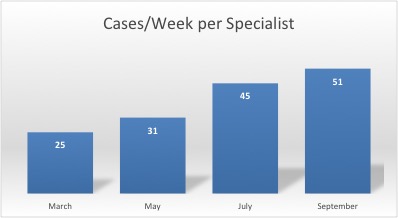
Productivity Metric
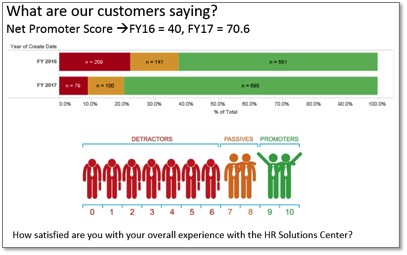
Customer Satisfaction Scores
In January, 2017 we will implement Restructure #3 and implement a full-blown rotational model. Each team member will spend 5-7 months in a specific team. Then, the team member will rotate to a new team. Effectively this will allow one member from each team to rotate to another team each month. The perceived benefits of this model are:
- A culture where ‘new eyes’ review processes each month;
- Cross-training that allows flexibility in team capacity; and
- Opportunities to experience variety in work and teams.
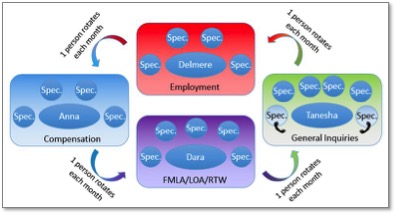
Restructure #3
Where we will end up is still to be determined but one thing is certain – we will continue to create incremental improvement opportunities in partnership with our customers. As Brian Tracy says, “Excellence is not a destination; it is a continuous journey that never ends.
